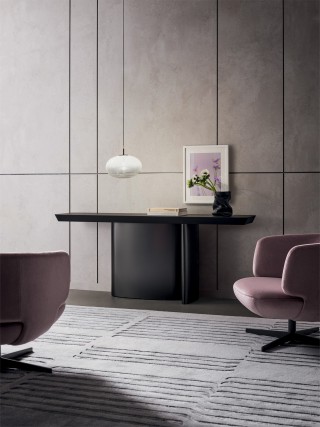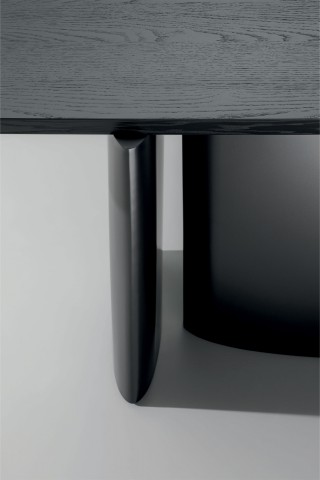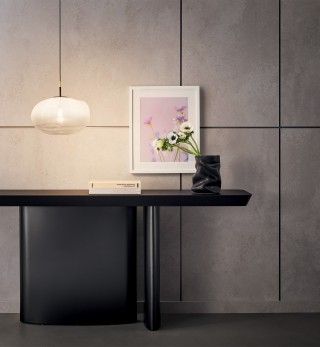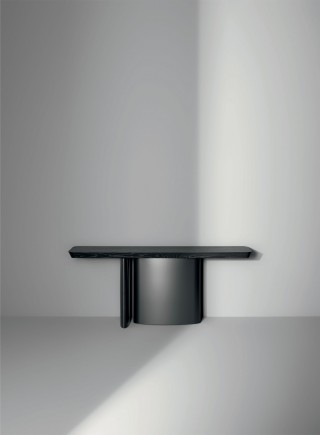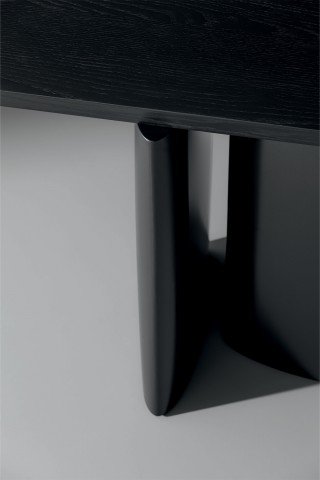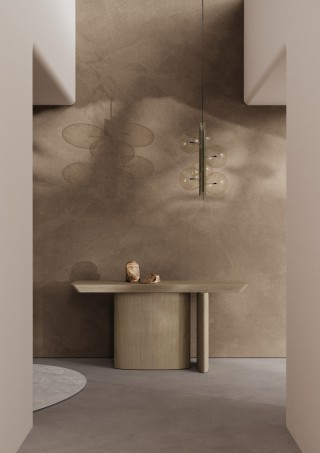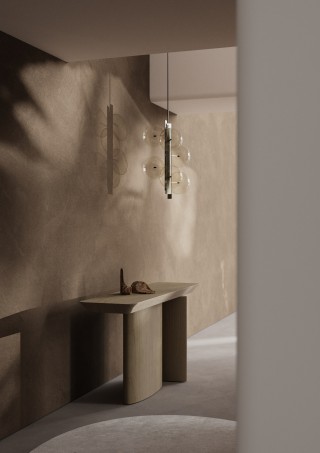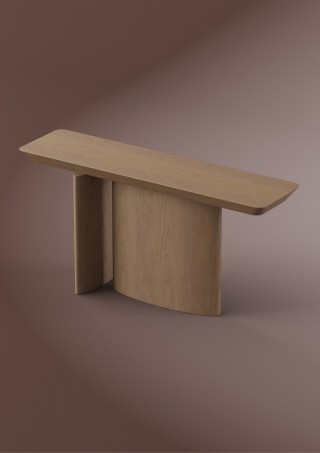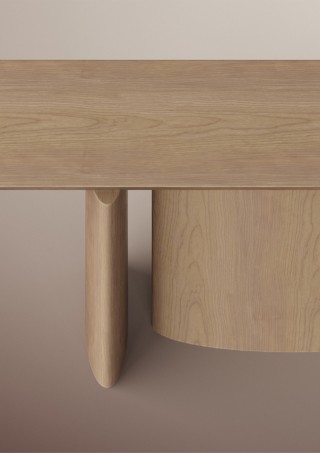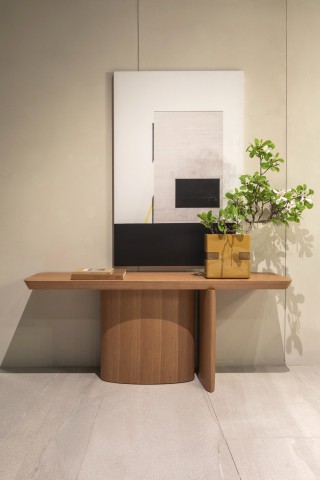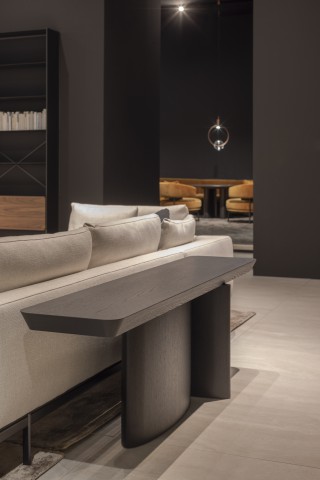CONSOLE ONE
BONALDO
The architecture of the Console “One” is unexpected, unique and in some ways imperfect. It is composed like a stack of elements that were not made to fit together and as if their each element had moved in un unexpected manner. They are placed as if they were not in place any more as one would expect them to be, as if they had drifted from their original position.
This console is also defined by an opening, a gap that allows a play of light between the two elements that form its base. An opening between the two curved modules that act as its legs. They are close enough to each other to generate a tension and a discussion within the piece itself.
What's more, the two legs are in a sense antinomic, placed at right angles to each other, creating a visual instability, but also an unexpected and somewhat discordant dynamic. At the same time, the interplay of its legs gives a direction to the console and thus to the space in which it is used in. Of course, if you turn it around, the direction of the console changes!
Although very controlled, the architecture of this console seems to be the result of stacking and assembling pieces that weren't made to go together, a bit like dolmens that were created by stacking disparate stones gathered from its surrounding area. But it's those peculiarities that gives the piece its richness, uniqueness, and its share of the unexpectedness.
